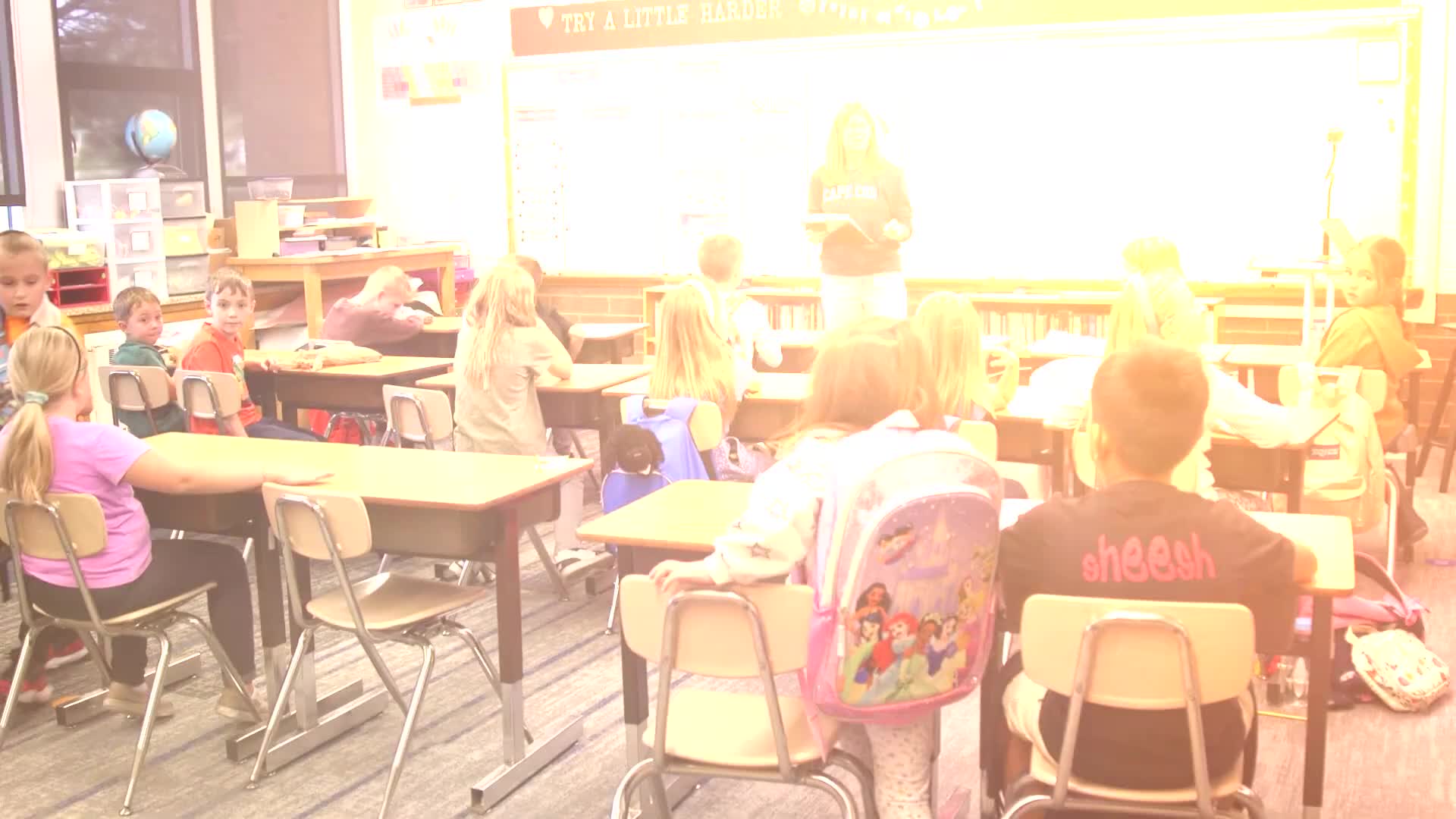Adelaide teacher outlines hands-on October science activities for third graders
October 27, 2025 | Davis County School District, Utah School Boards, Utah
This article was created by AI summarizing key points discussed. AI makes mistakes, so for full details and context, please refer to the video of the full meeting. Please report any errors so we can fix them. Report an error »

Lynn James, a third-grade teacher at Adelaide, described a series of October-themed, hands-on science experiments she uses to help students remember concepts.
"My name is Lynn James. I'm a third grade teacher here at Adelaide. I've been here for 12 years," James said, explaining the classroom objectives. "So we wanted to be able to expose the kids to some fun science experiments, and we just came up with this October themed science experiments for the kids, and it stays in their brains a little bit more when they put their hands on it."
An unidentified speaker who also spoke during the presentation described the first activity as a Play-Doh molding exercise finished with plaster so students can return the following week and see a hardened "fossil." "We did Play Doh, and we put it in this bowl, and we put molds in it, and then we put plaster on it. And then when we come back next week, it's gonna be a fossil," the speaker said.
The unidentified speaker also summarized a "mummy hand" demonstration that used dish soap and white vinegar and produced visible foaming inside a glove when the materials reacted. The speaker said the classroom observed an active foaming reaction during the demo.
A sunlight-based activity was described as well: after placing materials in sunlight for about five minutes and removing them, students observed distinct shadow or "sunlight picture" effects. "After, like, 5 minutes, we took all of the stuff off, and there was this, like, weird shadow," the speaker said.
James emphasized the pedagogical rationale for the activities, saying hands-on science is memorable. "Science is such a great thing for kids because it can be so hands on. And the more fun it is, the more they're going to remember it," she said. James also noted she has taught at Adelaide for 12 years.
No formal actions, votes or policy changes were recorded in the provided transcript excerpt. The remarks constitute a brief classroom presentation focused on in-class pedagogy and student engagement rather than district-level policy.
"My name is Lynn James. I'm a third grade teacher here at Adelaide. I've been here for 12 years," James said, explaining the classroom objectives. "So we wanted to be able to expose the kids to some fun science experiments, and we just came up with this October themed science experiments for the kids, and it stays in their brains a little bit more when they put their hands on it."
An unidentified speaker who also spoke during the presentation described the first activity as a Play-Doh molding exercise finished with plaster so students can return the following week and see a hardened "fossil." "We did Play Doh, and we put it in this bowl, and we put molds in it, and then we put plaster on it. And then when we come back next week, it's gonna be a fossil," the speaker said.
The unidentified speaker also summarized a "mummy hand" demonstration that used dish soap and white vinegar and produced visible foaming inside a glove when the materials reacted. The speaker said the classroom observed an active foaming reaction during the demo.
A sunlight-based activity was described as well: after placing materials in sunlight for about five minutes and removing them, students observed distinct shadow or "sunlight picture" effects. "After, like, 5 minutes, we took all of the stuff off, and there was this, like, weird shadow," the speaker said.
James emphasized the pedagogical rationale for the activities, saying hands-on science is memorable. "Science is such a great thing for kids because it can be so hands on. And the more fun it is, the more they're going to remember it," she said. James also noted she has taught at Adelaide for 12 years.
No formal actions, votes or policy changes were recorded in the provided transcript excerpt. The remarks constitute a brief classroom presentation focused on in-class pedagogy and student engagement rather than district-level policy.
Don't Miss a Word: See the Full Meeting!
Go beyond summaries. Unlock every video, transcript, and key insight with a Founder Membership.
✓
Get instant access to full meeting videos
✓
Search and clip any phrase from complete transcripts
✓
Receive AI-powered summaries & custom alerts
✓
Enjoy lifetime, unrestricted access to government data
30-day money-back guarantee


